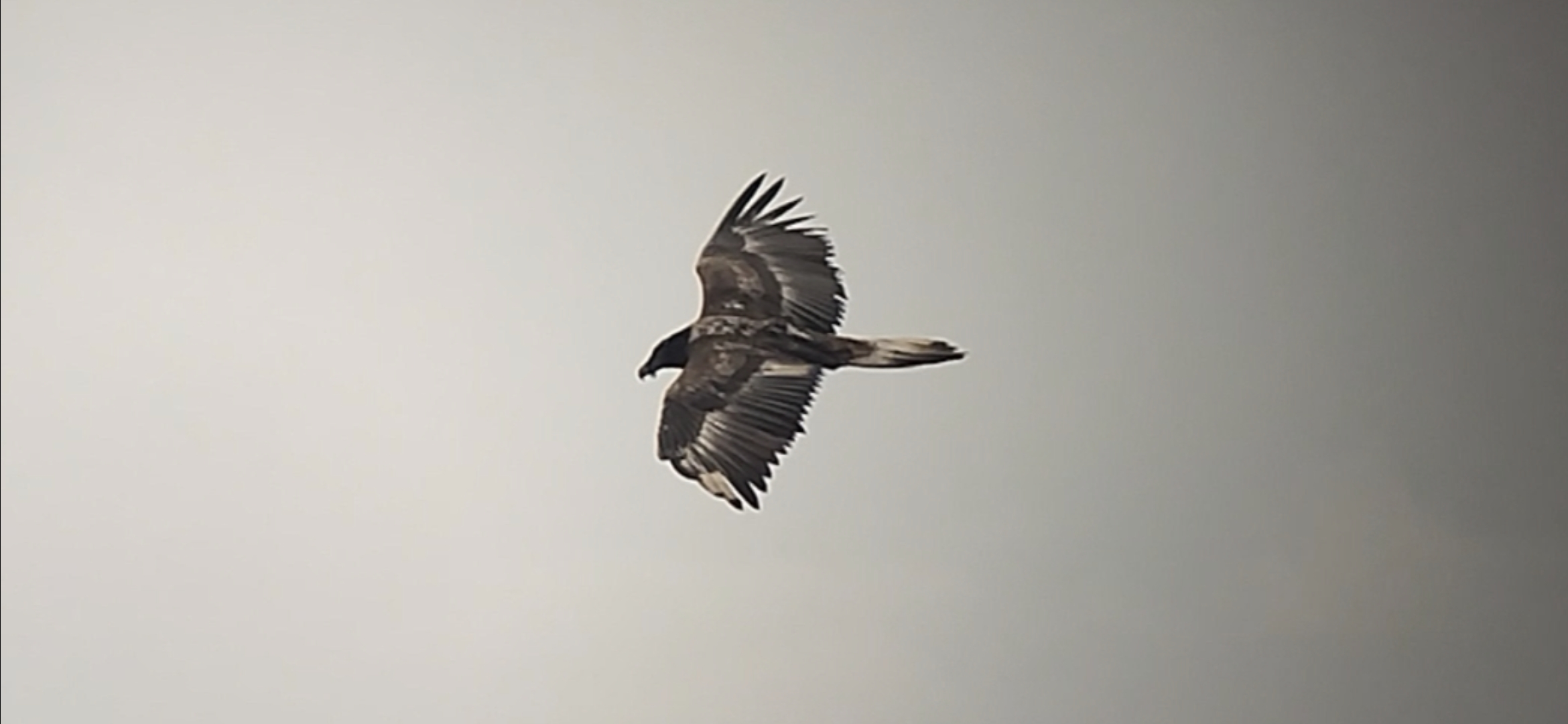
Bearded Vulture pair bonding in captivity is a crucial moment for birds, but it is not an easy or simple process. These birds don’t pair as easily as other species, and they are very selective with their partners. Some Bearded Vultures in captivity have been with 5 or 6 different potential partners until they bred successfully. There are a lot of various factors involved, and each bird is different too, so it’s challenging to predict what is going to happen whenever attempting a new pair bonding. It is a delicate process where the utmost attention is necessary to monitor the progress closely as severe episodes of aggression may occur between two individuals, and staff must be alert to intervene and prevent serious injuries.
On Tuesday, 20 October, following the installation of the new video surveillance cameras, the staff at the Bearded Vulture captive breeding centre of Guadalentín created three new pairings. However, this does not mean that there are now three new pairs since a reasonable amount of time should pass to verify that the specimens accept each other.
Let’s meet the birds of the new pairings that might hopefully become breeding pairs eventually!
Montero BG590 and Nona BG658
Montero is an 11-year-old male that was previously paired with Perea. Both birds were of reproductive age, but they did not become a breeding pair, and so the team decided to do some matchmaking again with other genetically compatible individuals. Therefore, they attempted pairing Montero with Nona, a nine-year-old female who was waiting to be paired, and now she finally is!
Cabús BG286 and Perea BG580
Cabús is a Pyrenean male who became a widow when his partner Corba died in December 2018. Since that time, Cabús has been depressed and has experienced a sharp decline, although it should be noted that he is an older specimen, nearing 40 years old. The team hopes that he will find a new companion in Perea to spend his few remaining time. Perea is a female of 11 years that, as mentioned above, lived with Montero and with which she did not want any relationship.
Napoleon BG947 and Josephine BG908
Napoleon is a three-year-old male coming from the Specialized Bearded Vulture Breeding Unit at the Recovery Centre Vallcalent in Lleida, managed by the Vulture Conservation Foundation (VCF). Josephine is a female that hatched in 2016 that is the first representative of the Corsican line within the Bearded Vulture Captive Breeding Network, coordinated by the VCF as part of EAZA’s EEP.
Josefina is a significant part of the Bearded Vulture EEP, especially in terms of her genetic makeup as Bearded Vultures on Corsica are the last remaining original population of the species that included the wider populations once found across the Alps, Sicily and Sardinia, which is known as a meta-population. The sharp decline of the wild Corsican population caused concern of losing the genes of this last remaining meta-population. As part of the emergency action plan, we decided to restock the Corsican population by releasing captive-bred bird and also include Corsican Bearded Vultures in the Bearded Vulture EEP. To do so, the VCF together with Parc Naturel Régional de Corse extracted eggs from wild nests that have been consistently unsuccessful over the last years and took them back to breeding centres. With our decades of experience in captive breeding, we incubate and raise the young chicks, and Josefina was the first bird that hatched and survived!
For the time being, there have been no severe confrontations or behaviours between the pairs, giving some hope that these pairing might work.
Captive breeding in Andalusia
In 1986, Bearded Vultures disappeared from the skies of Andalusia. One of the ways to bring the species back from extinction was the establishment of the Bearded Vulture captive breeding centre of Guadalentín in 1996, aiming to produce captive-bred chicks for release into the wild. The Centre has come a long way since then, and today, it breeds the most Bearded Vultures in captivity every year. Guadalentín is the most important Centre within the VCF’s Bearded Vulture EEP as it contributes the most chicks every year to reintroduction programmes in Andalusia, but also in other regions across Spain, France and the Alps. It also specializes in double adoptions and takes young Bearded Vultures from other Bearded Vulture EEP partners to naturally rear the chicks. As of 2020, the VCF also assumed management of the Centre following an agreement with the Junta de Andalucía.
Bearded Vulture reintroduction in Andalusia
Bearded Vultures went extinct in Andalusia mainly due to direct persecution, wildlife poisoning and human disturbance at the nesting sites. To bring them back, Junta de Andalucía, and us here at the Vulture Conservation Foundation (VCF) started a reintroduction project in 1996, and the former Fundación Gypaetus was also created to manage the project. Since the first releases in 2006 and with the release of eight individuals this year, 71 Bearded Vultures will be released in Andalusia by July this year in the provinces of Jaén and Granada. Thanks to tackling threats and releasing birds, the population of the species is gradually increasing. There are currently three Bearded Vulture pairs and 43 confirmed individuals in Andalusia.







